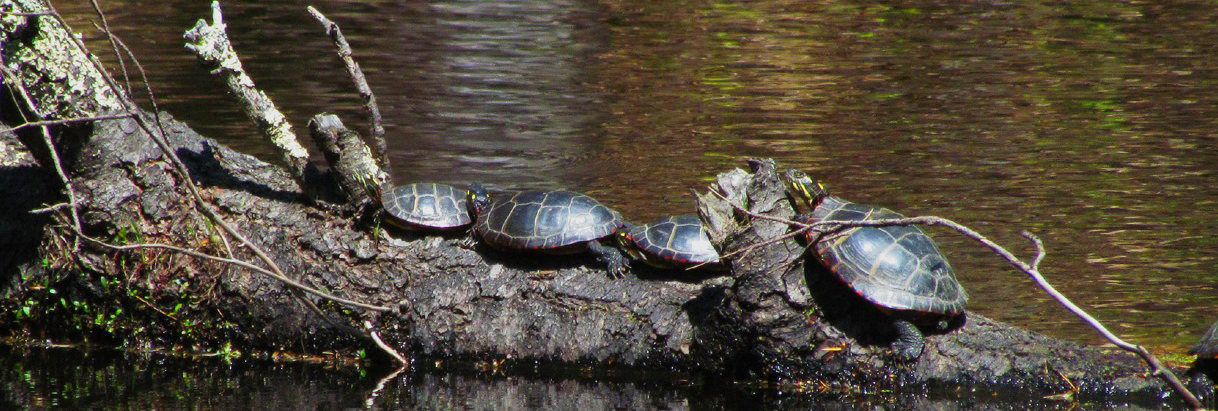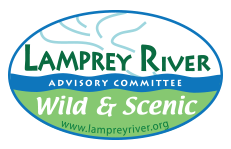TEACHER BACKGROUND-WATER AND TEMPERATURE
Background:
Air and water temperature are important for the animals and plants living in or near the river. The effect that air temperature has on river water temperature is mostly seasonal. It may be weeks before a change in air temperature will affect river temperature.
Temperature affects the functioning of living things. When water warms, the temperature inside so-called "cold-blooded" animals warms. Their metabolism increases, making them breathe faster and digest food faster. As a rule, for every 10 degrees Celsius increase in temperature there is a doubling of metabolism. This is true only to a point, however, because high temperatures also decrease the supply of dissolved oxygen in the water. Winter temperatures generally do not get cold enough in the river to affect most fish. There are some species, however, that can survive in very cold lakes and in the ocean, because they have a type of "anti-freeze" that lowers the freezing point of body fluids.
Cold air and water temperatures affect plants, too. Many of them shed leaves or become dormant until warmer temperatures come in the spring. Others might die completely, relying upon seeds to reproduce when temperatures warm.
Temperature is measured both on the Fahrenheit scale and the Celsius or centigrade scale in this country. Our weather is reported in Fahrenheit, but most scientific temperature measurements are taken on the Celsius scale. This makes for some confusion for students and needs to be explained. On the Fahrenheit scale, fresh water freezes at 32 degrees at sea level and it boils at 212 degrees. On the Celsius scale, water freezes at zero and boils at 100 degrees. The students can read both scales and record both measurements in their notebooks or data sheets. Be sure to note that different thermometers are numbered and segmented in different ways. Students have to determine what the segments on their thermometers are worth: 1, 2, 5, or 10 degrees.
Preparation:
At this station the students will test water samples of warm and cold water with thermometers that register Celsius and Fahrenheit.
Have at least 2 Celsius/Fahrenheit thermometers, 2 containers of water of different temperatures labeled A and B, a sponge to wipe up drips, data sheets, clipboards, and pencils ready for the group of four students.
Have the students examine the thermometers and talk about the different scales. The words Fahrenheit and Celsius should be written on the board and explained. Be sure that each student gets to do the experiment and record the data.
Discussion:
Encourage the students to develop questions they have about the experimental results. List the questions and lead them to some of the questions they will consider when they do the field experiment. These are listed at the end of the student experiment on temperature. Use the questions during the follow-up discussions at the end of the field trip.
CHAPERONE CHEAT SHEET: TEMPERATURE
Use the thermometer with the string attached for water temperature and the other one for air. Do not touch the red bulb of the thermometers. Leave the thermometer in air or water for at least 5 minutes. One student will test the air. One student will test the water. The other two students will read the thermometers.
Record the temperatures in both Fahrenheit and Celsius on the data chart, as well as the site number and time of day.
If the water temperature is less than 55o F or 13oC, this is an excellent sign.
If the water temperature is between 55o and 75o F (13o and 24o C), this is an OK sign.
If the water temperature is greater than 75oF or 24oC, this is a bad sign.
STUDENT EXPERIMENTS -WATER AND TEMPERATURE
Overview:
In this experiment your team will take the air and water temperatures at your chosen site along the Lamprey River. Temperature is important to living things for many reasons. When the water temperature is warmer, fish move faster and grow faster than when the water is colder. Air temperature is important, too. It can cause the water to become colder or warmer. We should remember, however, that air temperature changes much faster than water temperature. For example, it takes several days or even weeks of warmer air temperatures to make water warmer.
Focus:
What are the air and water temperatures at your chosen site?
Materials:
For the pre-field experiment:
- 2 Celsius/Fahrenheit thermometers for each team
- ½ cup of warm water
- ½ cup of cold water
- data sheet or (Mixing Hot and Cold Water sheet)
- clipboard and pencils
For the field experiment:
- 1-2 Celsius/Fahrenheit thermometers
- fishing line
- duct tape
- small rock
- data sheet with clipboard
- pencils
- bucket with a rope attached to the handle
Procedures:
Pre-field experiment:
1. Hold a thermometer in the air until the red line stops moving. Write down both the Celsius and Fahrenheit readings on your data sheet under “air temperature”.
2. Hold a thermometer in the cup of warm water until you can take a steady temperature reading. Write down the Celsius and Fahrenheit readings on your data sheet under “warm water”.
3. Hold the thermometer in the cup of cold water until you can take a steady temperature reading. Write down the Celsius and Fahrenheit readings on your data sheet under “cold water”.
4. Pour the warm water into the cup of cold water. Guess what the temperature of the mixed water will be, then hold the “cold” thermometer in the cup of mixed water until you can take a steady temperature reading. Write down the Celsius and Fahrenheit readings on you data sheet under “mixed water”.
Field experiment:
1. Hold a thermometer in the air until you can take a steady temperature reading. Write down the Celsius and Fahrenheit readings on your data sheet under “air temperature”.
2. Get a sample of water in the bucket or tie a long string to a thermometer and use the string to lower the thermometer directly into the river. Hold the thermometer in the water until you can take a steady temperature reading. Write down the Celsius and Fahrenheit readings on your data sheet under “river”.
3. If you want to get a water temperature reading at a deeper spot you can modify your thermometer as follows: cut some fishing line several meters long. About 15 centimeters from the end of the line, tie the line around a small rock. Wrap a piece of duct tape around the line and rock to hold them in place. Now tie the thermometer to the very end beneath the rock. Secure the thermometer with a piece of tape. Holding the opposite end of the line, carefully lower the thermometer into the water. The rock will act as a weight to keep the thermometer submerged. Keep the thermometer submerged for as long as it takes to obtain a steady reading in the shallow water. Write down the Celsius and Fahrenheit readings on your data sheet with a note saying that the temperature was taken at a deeper level.
Discussion:
How does air temperature relate to water temperature?
Over the course of a day, which do you think varies more, water or air temperature?
How do water and air temperatures affect the river's ability to sustain life?
If you took the temperature of the water at a deeper level, was it different from the temperature at the surface? Why or why not?
Do all fish prefer the same water temperature?
Mixing Hot and Cold Water Data Sheet
names of students in the group ___________________________________________
What do you think happens when you mix equal amounts of hot and cold water?
Measure and record the temperature of the air. _________________
Measure and record the temperature of the cold water. (1/2 cup)__________________
Measure and record the temperature of the hot water. (1/2 cup)___________________
Mix the cold and hot water, record your team’s guess for what the temperature of the mixed water will be, then measure and record the actual temperature.
guess___________________ actual temperature______________________
Note: Leave the thermometer in the water until the temperature stops moving up or down. Do not put your hand or fingers on the bulb of the thermometer. Each student in the group should have an opportunity to read the thermometer. The other members should see if they agree with the reading. C = Celsius reading. F = Fahrenheit reading.
|
Groups |
air |
cold water |
hot water |
mixed temp. guess |
mixed water |
|
Group 1: C
F |
|
|
|
|
|
|
Group 2: C
F |
|
|
|
|
|
|
Group 3: C
F |
|
|
|
|
|
|
Group 4: C
F |
|
|
|
|
|
|
Group 5: C
F |
|
|
|
|
|
|
Group 6: C
F |
|
|
|
|
|
What was the difference between the temperatures of the cold and hot water?
Was the temperature of the mixed water what you thought it should be? _____________
How does your guess compare to the actual temperature of the mixed water?
Did all of the groups have similar results (for their mixed water temperature)? ________
Why?

